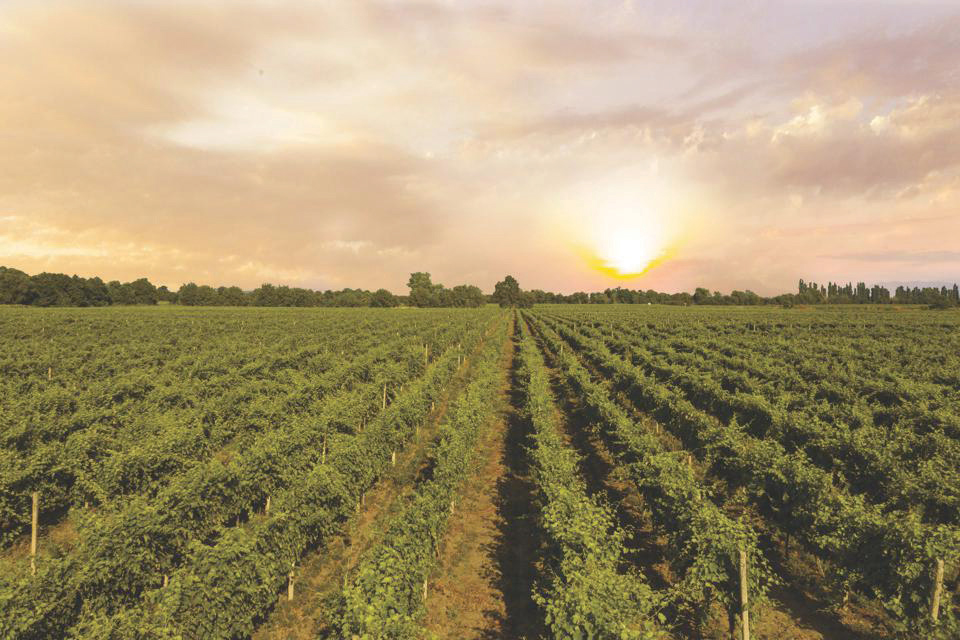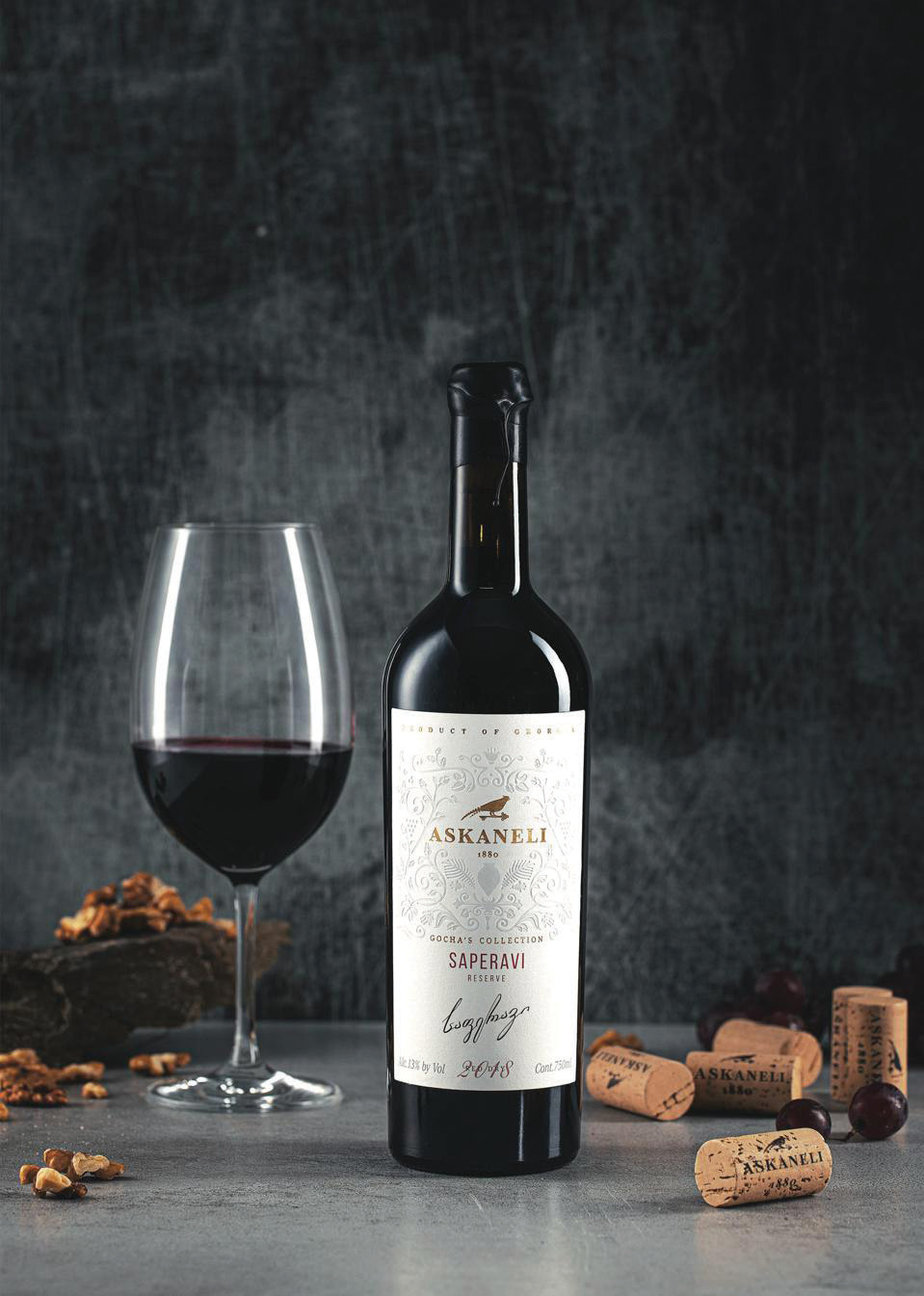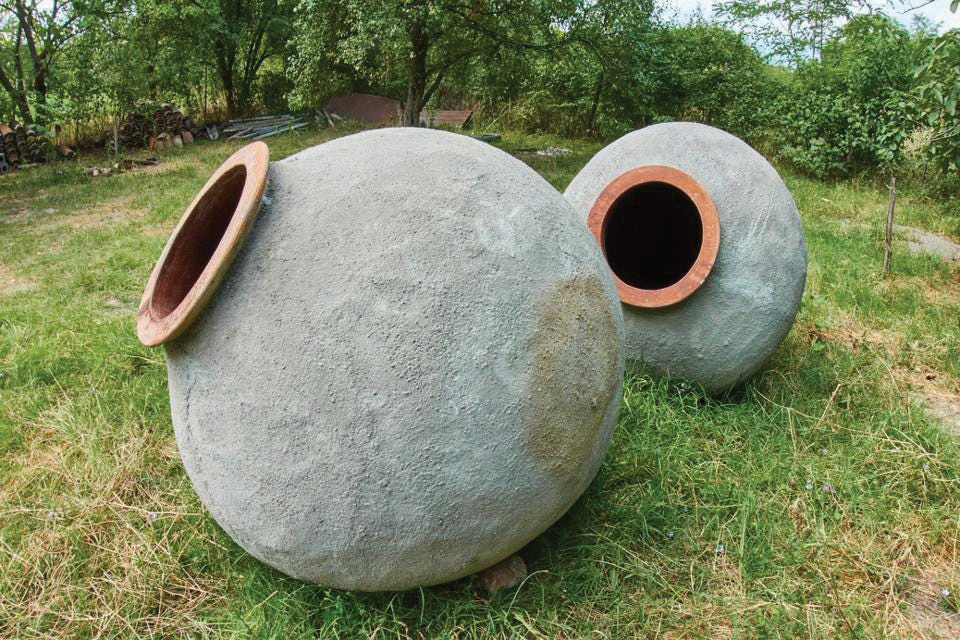After a delayed flight out of New York, a five-hour layover in Istanbul followed by the two-plus-hour trip across the Black Sea (in a tuxedo!) into Tbilisi, and a stunning wine reception at the residence of Georgian President Salome Zourabichvili, I was exhausted, and not sure how I’d make it through the dinner that was still to come.
And yet, sometime around the three-hour mark of the epic meal on my first night in Tbilisi, I found myself energized in a way I hadn’t felt in a long time. I had never experienced hospitality quite like this before, and the combination of conviviality, kindness, and mind-boggling generosity electrified me in totally unexpected ways. By ten o’clock that night, I should have been in bed; instead, I was savoring some of the most transformative wine and food I’d ever tasted.
That, it turns out, is one of the secrets to the notable rise in the awareness and popularity of Georgian wines.

Yet it’s more than that, explains Gocha Chkhaidze, who, with his brothers Jimsher and Zurab, founded Askaneli Brothers, the most well-known and widely distributed producer of Georgian wines and spirits, and a leader in the rise of the entire category. “From my point of view, raising awareness about Georgian wine is a more comprehensive issue and is not only related to the character of wine or the history of Georgian wine production,” he explains. “All those things put together have had an effect. For instance, the technological uniqueness of qvevri wine [more on the later], Georgian cuisine, the diversity and varieties of Georgian types of grape, as well as the unique taste properties and characteristics.”
The qvevri wines Chkhaidze refers to are among the country’s calling cards, and a direct link to the earliest days of winemaking. Georgia, in fact, is widely agreed to be the birthplace of winemaking as we know it. According to Wines of Georgia, the national trade organization, “Winemaking in Georgia stretches back over 8,000 years of history. According to archaeological evidence, the first Georgian wines were made and stored in earthenware vessels called qvevri (or kvevri). The qvevri is Georgia’s most important and best-known winemaking vessel, and it remains the centerpiece of traditional winemaking.”
Even today, those earthenware qvevri are still used, and to increasingly impressive ends. Indeed, the layered, deeply complex wines that are produced in them are both ancient in their origins and perfectly suited to today’s turn toward skin-contact orange wines and more natural means of production. Askaneli’s 2019 Muza Qvevri, for example, is profoundly delicious, lifted with aromas of honeycomb and singing with dried and mashed apricots, marzipan, preserved oranges and lemons, and hints of dried honeysuckle. It’s the kind of wine that changes in utterly fascinating ways as the chill comes off it in the glass: Interactive, rewarding wine at its best.
So many of the top wines of Georgia surprise and charm in equal measure. It’s home to an utterly fascinating wine culture, and its location— to the east of the Black Sea, bordered by Turkey, Armenia, Azerbaijan, and Russia—and natural geography provide a fantastic range of terroirs and micro-climates for growers and producers to express. Askaneli, for example, is based in Guria, in the west, where warmer temperatures facilitate greater ripeness, but they also grow and produce wine in the east of the country, in Kakheti, which is where the majority of Georgian wine is grown. By expressing these two different parts of the country, Askaneli is able to fully express what Georgian wine is capable of in particularly profound ways.

The country is also home to an array of grape varieties that may be unfamiliar to many American consumers, though that is changing as Georgian wines continue to find their way onto more retail shelves and restaurant wine lists. So while varieties like Rkatsiteli, Saperavi, Kisi, and more may not be part of many consumers’ everyday wine lexicon, the way they manifest themselves in the glass is wildly enjoyable. Askaneli’s 2021 Manavi, for instance, is produced from a blend of 85% Kakhuri Mtsvane and 15% Rkatsiteli, and while most American’s haven’t experienced a wine composed like that before, it shares important similarities with many Spanish white wines. Its excellent acidity, kiss of almond skin, subtly saline finish, and notes that my colleague, the sommelier and consultant Erik Segelbaum, noted was reminiscent of finger-lime caviar, will appeal to anyone who craves a refreshing yet deeply complex white wine. Their 2021 Kisi, produced entirely from the grape of the same name, reminded me of a particularly vibrant Semillon, with notes of white strawberries, Mandarin oranges, Galia melons, salty almonds, dried lemon blossom, and a pulse of lemon-lime—its food-friendliness is remarkable.

Red wines also thrive in Georgia. I was wowed by the Askaneli Mukuzani 2020, for example, which is crafted from Saperavi grapes and speaks of concentrated and sappy cherries, with well-calibrated tannins structuring flavors of leather, porcini broth, and bouillon, a spine of minerality running down the middle and reminiscent of the great wines of Mt. Etna in Sicily.
Yet the success of the Georgian wine industry is about more than the excellent wines themselves—the country itself, its history, culture, and welcoming character, have also contributed in important ways. “Georgia has become a very interesting and attractive tourist country, and our hospitality has gained widespread popularity,” explains Chkhaidze. “All this has led to the need for the production of quality wine in our country, which has accordingly contributed to raise its awareness.”
It’s a virtuous cycle, and a delicious one, too. Chkhaidze adds: “The uniqueness of Georgian wine itself is determined by the fact that a wine itself speaks much, but when it is combined with the centuries-old Georgian culture, traditions, Georgian cuisine and hospitality, it all makes it even more unique. In general, the recent increase of tourist flows has played an important role in the promotion of Georgian wine and the acquisition of its own identity on a global scale.”
As that identity continues to expand, and as Georgian wines gain greater familiarity and availability, producers like Askaneli will find themselves in even more public positions as ambassadors of sorts for the wines of the country, as well as of Georgia itself. “Initially, I didn’t really think about becoming an ambassador of Georgian wine in the world,” Chkhaidze notes. “I set myself the goal, first of all, to improve, excel, grow, and develop myself and my own brand, constantly introduce innovations, and consequently produce Georgian wine of the premium quality, and then promote it around the world. As a result, if it is said that I make an important contribution to the promotion and raising awareness of Georgian wine, then my initial goal has been achieved. Today if we do Georgian business well, we might have the right to be called the ambassadors of our country.”

As more consumers and wine professionals around the United States grow increasingly familiar with and passionate about the wines of Georgia, it’s a role that promises to grow in importance.


















